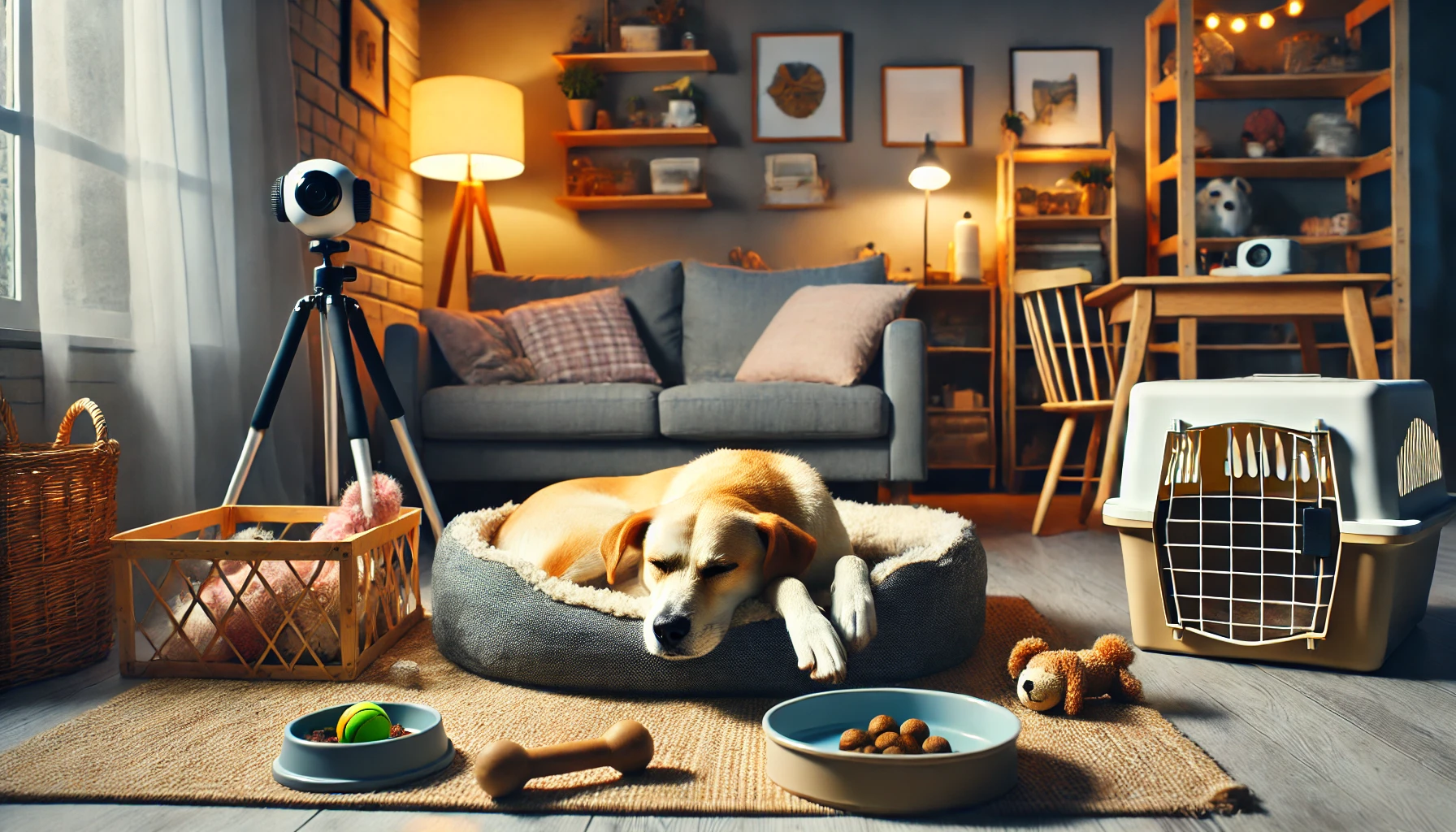Whether you work outside the home, run errands, or simply need to step out for a few hours, most dog owners eventually face the challenge of leaving their dog home alone. While dogs are social animals that enjoy companionship, they can learn to stay calm and content when alone—if properly prepared.
In this article, we’ll go over the most important tips and precautions to take before leaving your dog alone, helping you avoid stress, accidents, or destructive behavior and ensure their well-being while you’re away.
1. Understand How Long Your Dog Can Be Left Alone
Dogs can generally be left alone for a few hours, but the acceptable time varies by age, temperament, and health.



If you need to be away for longer periods, consider doggy daycare, a pet sitter, or a trusted neighbor to check in on your dog.
2. Provide a Safe and Comfortable Environment
Your dog needs a secure and cozy space to rest and relax while you’re gone.





Creating a calm and secure environment reduces stress and prevents destructive behavior.
3. Use Mental Stimulation to Prevent Boredom
Boredom is one of the most common causes of unwanted behaviors when dogs are left alone. Keep your dog mentally engaged with stimulating activities.




These activities help your dog associate alone time with positive experiences.
4. Establish a Calm Departure Routine
Dogs are very perceptive and can pick up on signals that you’re about to leave. If you make a big fuss when saying goodbye, it can trigger separation anxiety.



The goal is to normalize your departure, so your dog understands it’s part of the routine.
5. Consider Background Noise or Soothing Sounds
Leaving some gentle background noise can make your dog feel less alone.



This can be especially helpful for anxious dogs or those sensitive to outside noises.
6. Exercise Before You Leave
A tired dog is a calm dog. If you give your dog plenty of physical and mental activity before leaving, they’re more likely to rest while you’re gone.



Making sure your dog is exercised helps prevent restlessness and mischief while they’re home alone.
7. Gradually Increase Alone Time (If Needed)
If your dog isn’t used to being left alone, start with short absences and slowly build up.



This helps build confidence and independence, especially in dogs with separation anxiety.
8. Watch for Signs of Stress or Anxiety
Some dogs handle alone time well. Others may struggle and show signs of separation anxiety, including:





If these behaviors occur regularly, consult a professional dog trainer or behaviorist for guidance. Gradual desensitization techniques can help, and in severe cases, your vet may recommend calming supplements.
9. Use Technology to Monitor Your Dog
Pet technology can help you keep an eye on your dog while you’re away.



This can be especially helpful when training your dog to feel safe alone.
10. What to Avoid When Leaving a Dog Alone




Your goal should be to create a positive, predictable, and safe experience every time you leave.
Final Thoughts
Leaving your dog home alone doesn’t have to be stressful—for you or your pet. With the right preparation, training, and environment, your dog can learn to be calm, confident, and content while you’re away.





By giving your dog the care and structure they need, you’ll help them feel secure even when you’re not home, and that’s one of the best gifts you can give a furry friend.
